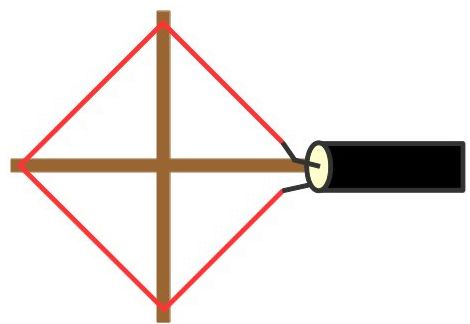 Part of being a ham radio operator is to provide communications in times of emergencies. With the upcoming Ohio NVIS Antenna Day, I decided to look into NVIS antennas. NVIS antennas, also known as Near Incident Vertical Skywave antennas have a high angle of radiation. Something on the order of 60 degrees, to straight up to 90 degrees. Unlike UHF and VHF signals, which typically have a 50 mile range with a yagi antenna up high, a NVIS antenna is designed for communication in the 75 – 500 mile range. Sometimes an NVIS antenna is referred to as a “cloud burner” since is directs most of its radiation more upward than a typical antenna.
Part of being a ham radio operator is to provide communications in times of emergencies. With the upcoming Ohio NVIS Antenna Day, I decided to look into NVIS antennas. NVIS antennas, also known as Near Incident Vertical Skywave antennas have a high angle of radiation. Something on the order of 60 degrees, to straight up to 90 degrees. Unlike UHF and VHF signals, which typically have a 50 mile range with a yagi antenna up high, a NVIS antenna is designed for communication in the 75 – 500 mile range. Sometimes an NVIS antenna is referred to as a “cloud burner” since is directs most of its radiation more upward than a typical antenna.
The idea with a NVIS antenna is to radiate as much power as possible at a high angle and have it be reflected off the ionosphere. From a practical standpoint, NVIS communications occurs at 10 mHz and below. Another part of the NVIS antenna is the fact that it is quite low to the ground. This helps radiate the signal at a high angle, as well as make it easy to deploy. There ar many opinions as to the best height of an NVIS antenna, but everyone seems to agree on aprox. 1/8 wavelength above ground and sometimes less.
I wanted a NVIS antenna that was portable, easy to set up, and cheap (of course). As it turns out, I had practically everything on hand. For my NVIS antenna, I started out with my 2 meter mag mount for my car. Then it was just a matter of attaching a quarter wave wire to the mag mount, then just string the wire horizontally from the mag mount to a tree, or a pole of some sort.
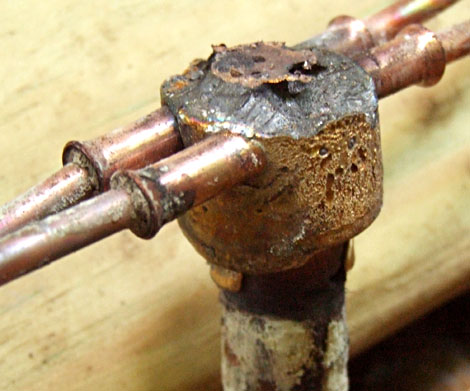 At work, I recently put in a ground system for our new antenna system, which requires a good
At work, I recently put in a ground system for our new antenna system, which requires a good 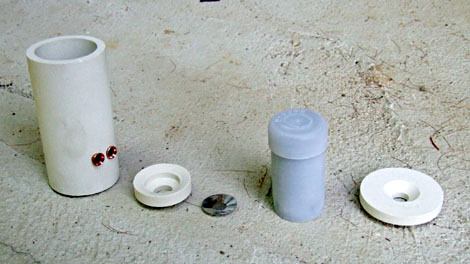

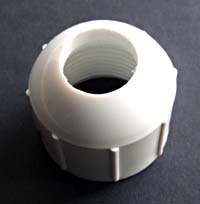

 Since my TV antenna was damaged by an ice storm, I needed to
Since my TV antenna was damaged by an ice storm, I needed to 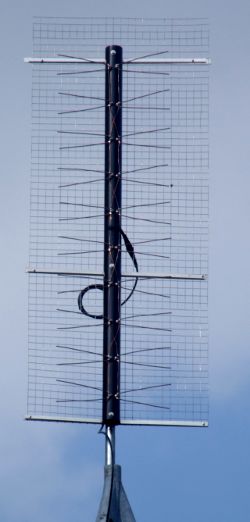 Additionally, the HDTV antenna builds I have seen don’t seem to have the long range that I need, such as the DB4. So I have come up with a modified version that works well in HDTV fringe areas. The photo on the left is my HDTV antenna that I built. I have also seen where people will take two HDTV DB4 antennas and gang them and then use a splitter / combiner to feed the HDTV antennas. Although this seems to work, my thinking is that adding a second antenna typically yields 3 db of gain. However a splitter / combiner has a 3 db insertion loss. Which is spelled out on the splitter’s package. It seems to me that you are losing what you have gained in ganging two DB4 antennas. My HDTV antenna build eliminates the need to use a splitter / combiner.
Additionally, the HDTV antenna builds I have seen don’t seem to have the long range that I need, such as the DB4. So I have come up with a modified version that works well in HDTV fringe areas. The photo on the left is my HDTV antenna that I built. I have also seen where people will take two HDTV DB4 antennas and gang them and then use a splitter / combiner to feed the HDTV antennas. Although this seems to work, my thinking is that adding a second antenna typically yields 3 db of gain. However a splitter / combiner has a 3 db insertion loss. Which is spelled out on the splitter’s package. It seems to me that you are losing what you have gained in ganging two DB4 antennas. My HDTV antenna build eliminates the need to use a splitter / combiner.